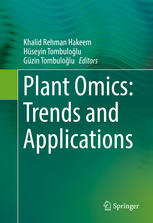

Most ebook files are in PDF format, so you can easily read them using various software such as Foxit Reader or directly on the Google Chrome browser.
Some ebook files are released by publishers in other formats such as .awz, .mobi, .epub, .fb2, etc. You may need to install specific software to read these formats on mobile/PC, such as Calibre.
Please read the tutorial at this link: https://ebookbell.com/faq
We offer FREE conversion to the popular formats you request; however, this may take some time. Therefore, right after payment, please email us, and we will try to provide the service as quickly as possible.
For some exceptional file formats or broken links (if any), please refrain from opening any disputes. Instead, email us first, and we will try to assist within a maximum of 6 hours.
EbookBell Team

4.4
12 reviewsTo comprehend the organizational principle of cellular functions at diff erent levels, an integrative approach with large-scale experiments, the so-called ‘omics’ data including genomics, transcriptomics, proteomics, and metabolomics, is needed. Omics aims at the collective characterization and quantifi cation of pools of biological molecules that translate into the structure, function, and dynamics of an organism or organisms. Currently, omics is an essential tool to understand the molecular systems that underlie various plant functions. Furthermore, in several plant species, the development of omicsresources has progressed to address the particular biological properties of individual species. Integration of knowledge from omics-based research is an emerging issue as researchers seek to identify significance, gain biological insights and promote translational research. From these perspectives, we intend to provide the emerging aspects of plant systems research based on omics and bioinformatics analyses together with their associated resources and technological advances. Th e present book covers a wide range of omics topics, and discusses the latest trends and application area of plant sciences. In this volume, we have highlighted the working solutions as well as open problems and future challenges in plant omics studies. We believe that this book will initiate and introduce readers to state-of-the-art developments and trends in omics-driven research.